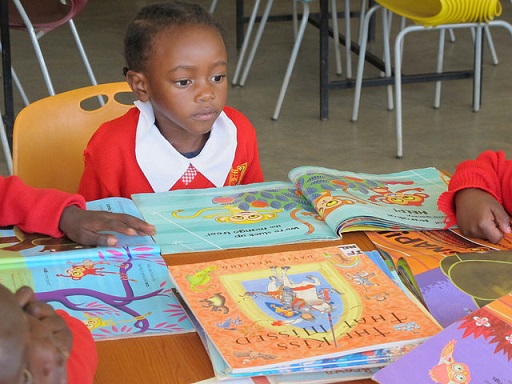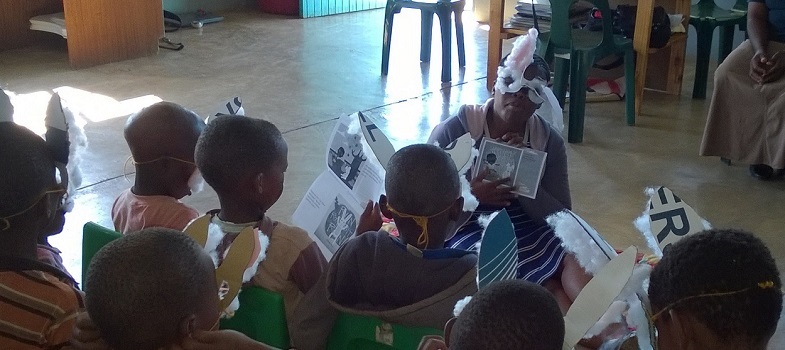Using storybooks

In Section 5 of this course you will focus on how you can develop children’s early reading skills through storybooks. In this section we are going to look at making use of stories in the classroom. Having completed Activity 2.6, you may wish to download other stories you particularly like to use with your classes.
Research has shown that children need to read at least 42 storybooks in a year to reinforce their developing literacy skills. Your storybook collection could include books, stories you have written down or freely available stories like those on the ASb.
When reviewing your collection of storybooks, think about whether they include these features (different storybooks will emphasise or include different features):
- a creative and rich use of language
- opportunities for children to join in
- familiar situations, places and events
- exciting narratives and interesting characters
- drama, conflict and resolutions, journeys or transformations
- interesting dialogue or humour
- a strong link between words and pictures
- repeating words and phrases, with variations
- repeating sentence patterns, changing only one or two words each time
- interesting images (photographs, pictures or drawings) for the children to talk about
- short in length if the storybook is for children to read on their own.
Activity 2.7: Using stories to support children’s early literacy development
Stories can be retold and extended in many ways. In your study notebook, write down the different ways you use stories to support children’s early literacy development.
Discussion
You can help children to:
- tell the story in their own words
- act out the story
- improvise dialogues between characters
- draw or paint the scenes
- tell their own versions of the story
- create alternative endings for the story
- perform the story for the school or for the community
- complete writing activities, such as story maps, lists or book-making.
Many teachers make their own storybooks by writing out stories on chart paper or old cardboard. Teachers also invite people from the local community into the classroom to tell stories rooted in the local culture. In the next activity you will explore resources that provides examples of teachers who did these activities.
Activity 2.8: Resources to help you make good use of stories in the classroom
The TESSA website has resources for teachers with classroom activities to support reading and literacy, as well as a set of ‘key resources’ that explain some of the active teaching approaches that you can use.
Spend some time exploring the literacy materials [Tip: hold Ctrl and click a link to open it in a new tab. (Hide tip)] and the key resources. All the resources are ‘open educational resources’ (OER), which means that they are free and can be copied and adapted.
Share some of the activities you find with a colleague. They will be useful to you later on in the course when you are planning reading activities.
African Storybook



